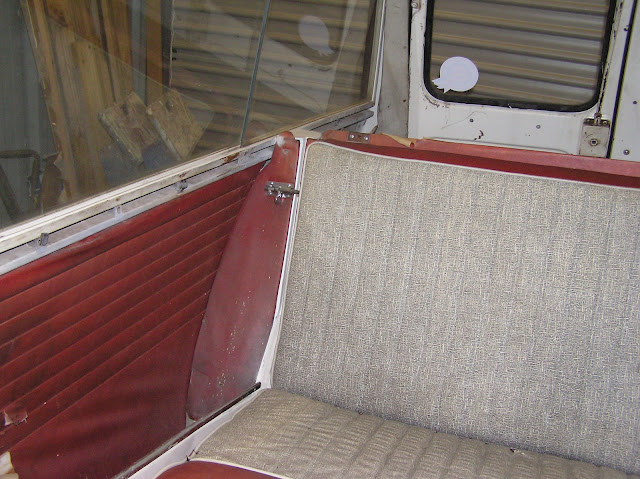 |
| Lap belt catch mounted through wheel arch. |
 |
| Lap belts in a Clubman Estate |
 |
| The wheel arch is structurally strong, but too low to mount a shoulder sash. Also the fuel tank is right there in my Traveller. |
Here are two more examples. Both have the reel mounted at a better height. However I have serious doubts about the strength of that section of the seat rest that these are attached to. The red one seems to be reasonably well reinforced, as well as being a few inches higher, but the black one is ugly and the bar which runs right across to the other side will obstruct the load area when the seat is folded down.

As mentioned previously the UK factory never needed to solve the problem, but the Australian factory did. The Australian factory never put an estate version into production, but they did experiment with a couple of prototypes. The green clubman estate in these photos was one of apparently two prototypes developed in the mid '80s as an experiment. Unfortunately the only pictures I have were taken from a gumtree ad when the one survivor was sold a few years back. There are a couple more photos in "The Mini Experience"magazine, but they are under copyright.
These pictures show that the the shoulder sash is attached in the rear corners of the roof, each side of the doors. There is a rigid 'droplink' mounted to the body above the side windows at the top and in the seat rest at the bottom. The droplink has a smooth loop that the seatbelt passes through. These keep the sash at a good shoulder height.
On the face of it this looks like a good solution. I imagine that a metal bracket must be welded into the upper rear corners of the body to provide a mounting point, but that wpuld be a very strong part of the body. The droplinks have comparatively little force on them becasue the belt just slides through, so they should be more than strong enough.
If I was going to fit lap sash belts, I think that's what I'd work toward. The mounting points should be able to be hidden under the trim in those areas comparatively easily. Choosing belts that complement the trim (not dirty black and flouro orange) would help.
























